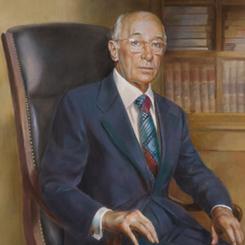 ALTON - Many people around Alton are familiar with the Melvin Price Lock and Dam, but how many Altonians actually know who Charles Melvin Price was?
ALTON - Many people around Alton are familiar with the Melvin Price Lock and Dam, but how many Altonians actually know who Charles Melvin Price was?
To answer that question, Riverbender.com asked around and did some research into the man who was important enough to have one of the busiest locks and dams on the Mississippi River named in his honor. This story is the first of many looking into the people for whom places are named.
Get The Latest News!
Don't miss our top stories and need-to-know news everyday in your inbox.
Charles Melvin Price was born on the first day of 1905 in East St. Louis, Illinois, according to his entry in the Congressional Biographical Dictionary. He graduated from St. Louis University High School as well as St. Louis University itself, and became a journalist after graduation. He quit journalism after getting a job as a secretary for Congressman Edwin Schaefer, a congressman from Illinois, when Price was 28.
Price then joined the Army at the age of 38 in 1943, when World War II was raging in Europe and in the Pacific. He served in the quartermaster corps, meaning his role was mostly in keeping troops supplied.
He was elected to Congress in 1944, at the age of 39. He served in Congress until his death of pancreatic cancer in April 1988. Former Congressman Jerry Costello filled his seat after Price's death.
During his time in Congress, Price chaired the Ethics Committee from 1967-1976, and the Joint Committee on Atomic Energy from 1973-1974. He also served as the chairman for the Committee on Armed Services between 1975-1985.
One of the most important pieces of legislation passed by Price was the Price-Anderson Nuclear Industries Indemnity Act, which was passed in 1957. Illinois contains 11 nuclear power plants, and the act partially passed by Price, governs liability-related issues for all non-military nuclear facilities constructed in the United States before 2026.
The purpose of the act is to at least partially compensate the nuclear industry against liability claims arising from nuclear incidents while still ensuring compensation coverage for the general public. The act establishes a "no fault insurance-type system" for the nuclear industry.
Claims up to $12.6 billion (as of the 2011 renewal) would be funded by the industry, but any claim larger than that would be covered by a Congressional mandate to "retroactively increase nuclear utility liability, or it would be covered by the federal government."
The act was considered "necessary" for the continued funding and research into nuclear power when it was passed in 1957.
The Melvin Price Federal Building and United States Courthouse in East St. Louis was also named in his honor.
More like this:

